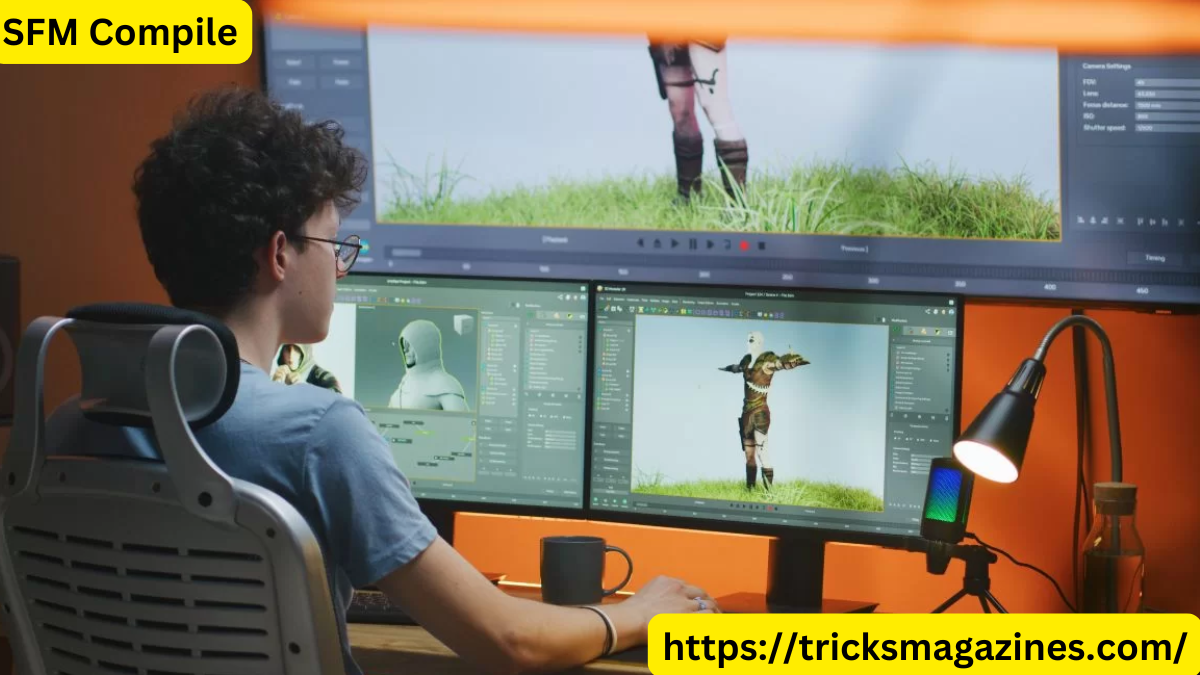Source Filmmaker (SFM) is a powerful tool developed by Valve, used primarily for creating animated films or videos with characters, assets, and settings from video games such as Team Fortress 2, Left 4 Dead, and Counter-Strike: Global Offensive. For creators, SFM allows for a lot of flexibility and control over animation, lighting, and scene composition. However, one crucial part of the production process is understanding how to effectively compile their work, which is where the term “SFM compile” comes into play.
What Is SFM Compile?
The term “SFM compile” refers to the process of compiling and building the final animation, scene, or model into a usable file format for rendering. In the context of Source Filmmaker, compiling primarily involves taking the scenes, models, and SFM Compile animations created within the program and preparing them for output in a manner that the software can render and export. This process ensures that the source files are converted into formats that can be used for final production, such as videos or still images.
The compilation step is an essential part of the SFM workflow because it helps optimize resources, streamline the creation process, and ensure that the final result matches the creator’s vision. It involves complex steps such as converting models, textures, animations, and scene setups into a readable format that SFM can process effectively.
The Role of Compiling in SFM Workflow
For anyone working in SFM, understanding how to compile their projects properly is crucial. Without the ability to compile, the final product of the work, whether it is an animated scene or a still shot, cannot be processed. Typically, compiling involves two major tasks: compiling models and compiling animations.
Model Compilation
When using SFM, models are one of the most important assets. These models can be characters, props, or entire environments. Often, models are created in third-party applications like Blender or 3D Studio Max, and then imported into SFM. However, even when models are imported into SFM, they still need to be compiled to work effectively within the Source engine’s constraints.
The process of model compiling includes converting the model’s geometry and textures into a format that can be understood by the Source engine. During this step, the model undergoes transformations, such as rigging (attaching a skeleton for animation), baking in textures (converting 3D textures to 2D maps), and setting up the collision meshes that will be used in the SFM environment.
While the model compilation process itself can be complex, it ensures that the assets used in SFM are optimized and work seamlessly within the program’s engine. This is particularly important for creators who are building high-quality animations and want to avoid performance issues or errors in the final output.
Animation Compilation
Compiling animations in Source Filmmaker is an equally important step in the overall workflow. Animations in SFM are created by manipulating rigs of 3D models and adjusting the movement of these models over time. The software tracks these movements and generates keyframes that define how objects should move and react.
To compile animations, SFM requires the animation data to be stored and processed in a way that the Source engine can render. This means that every movement, position, and rotation must be processed into a final file format. Additionally, any custom behaviors like facial expressions, lip-syncing, or environmental effects need to be compiled so that they appear correctly during the render process.
One of the main challenges in animation compilation is ensuring that the performance of the animation is smooth and that all transitions between different poses are believable. By compiling the animations correctly, creators avoid issues like jittery or unnatural movements, which can severely affect the quality of the final production.
Tools for Compiling in SFM
To compile models, animations, and other assets within SFM, several tools and utilities come into play. One of the most important is the StudioMDL tool, which is a command-line utility used to compile models for the Source engine. It reads model files in SFM and converts them into a format that is usable within the Source engine. It ensures that the model’s geometry, textures, and animation data are properly structured, so they can be easily imported into the SFM environment.
For animations, SFM uses a similar approach. Once an animation sequence is created in the timeline, the project needs to be compiled into a format that the engine can read. The process includes rendering out frames and ensuring that they are compatible with the Source engine’s rendering pipeline.
SFM provides an internal rendering system, but some users might prefer external rendering programs that specialize in converting their projects into high-quality images or video files. These can include advanced rendering settings, lighting adjustments, and post-processing effects that enhance the final appearance of the animation or scene.
Common Issues During the Compilation Process
While compiling in SFM is generally a straightforward process, there are several challenges that creators might face. One of the most common issues is dealing with errors related to missing or improperly referenced files. When compiling a project, SFM looks for all the associated files (models, textures, animations, and scripts), and if anything is missing or misplaced, it can result in errors during compilation.
Another common issue is related to the performance of the compiled scene. SFM allows for high-quality renders, but this can come at the cost of performance, especially when there are large numbers of models or complex animations involved. Ensuring that the assets are properly optimized before compiling is essential to achieving a good balance between visual quality and rendering speed.
Finally, there can be issues with texture mapping and UV coordinates when compiling models. Models often need to be carefully UV-unwrapped before they can be compiled correctly. If the UV mapping is wrong, it can result in visual glitches during rendering, such as textures that do not appear correctly on the model.
Best Practices for Efficient SFM Compilation
To ensure that the SFM compilation process goes smoothly, there are several best practices that creators should follow. First and foremost, it’s crucial to always keep backups of your work. The compilation process can sometimes result in unexpected errors or issues, and having backups allows you to restore your project if something goes wrong.
Additionally, creators should regularly check for missing or broken links to files during the compilation process. Using external tools to check and repair file paths can save time and prevent issues from arising later in the workflow.
Lastly, optimizing models and animations before compiling can save a significant amount of time and effort. Reducing polygon count on SFM Compile models, compressing textures, and removing unnecessary assets can improve the speed of compilation and reduce the likelihood of performance issues during rendering.
Conclusion
The process of SFM compile plays a critical role in turning an animation project into a final, renderable product. By compiling models and animations correctly, creators ensure that their projects will work within the Source engine’s constraints and deliver the quality they intend. While it may involve some technical challenges, understanding how to compile effectively is essential for any SFM user looking to produce high-quality animations or videos. By following best practices, troubleshooting common issues, and using the right tools, creators can optimize their workflow and avoid frustrating setbacks in the animation process.





